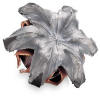Kind of Blued
Member
I understand that any factory hollowpoint is fine for self defense, but there are a few things that I don't understand about bullet weight/velocity correlation.
I'm looking at 9mm and .38 Special defense loads on Double Tap Ammunition's website and much of what I'm noticing is that the lighter bullet consistently produces more muzzle energy than the heavier bullet. I thought it was the case that any given cartridge has an "ideal" bullet weight which may be anywhere in the possible spectrum for that load.
I understand that heavier bullets retain their energy more effectively over a distance, so does this create a rule of thumb? The closer the target the lighter the bullet, or is it dependent upon the cartridge?
I'm looking at this data with my small carry guns in mind i.e. SHORT BARRELS and UNACCOMODATING GRIPS. From what I understand, recoil has more to do with bullet weight than anything else. Would the lighter 115gr. 9mm and 125gr. .38 loads make the most sense considering recoil? Also because a self-defense situation would be within very close range?
Here's the data I'm referencing:
9mm +P Loads
115gr @ 1415fps / 511ft. lbs. (from a G17)
Glock 19 velocity - 1395fps
124gr @ 1310fps / 473ft. lbs. (from a G17)
Glock 19 velocity - 1295fps / 462 ft. lbs.
147gr @ 1135fps / 421ft. lbs. (from a G17)
Glock 19 velocity - 1120fps
Is there any special consideration needed for my short-barreled handguns? Would the 115gr. load produce more muzzle energy out of ANY barrel length?
Sorry for all of the questions. One final question: Am I putting too much importance into muzzle energy in the first place?
I'm looking at 9mm and .38 Special defense loads on Double Tap Ammunition's website and much of what I'm noticing is that the lighter bullet consistently produces more muzzle energy than the heavier bullet. I thought it was the case that any given cartridge has an "ideal" bullet weight which may be anywhere in the possible spectrum for that load.
I understand that heavier bullets retain their energy more effectively over a distance, so does this create a rule of thumb? The closer the target the lighter the bullet, or is it dependent upon the cartridge?
I'm looking at this data with my small carry guns in mind i.e. SHORT BARRELS and UNACCOMODATING GRIPS. From what I understand, recoil has more to do with bullet weight than anything else. Would the lighter 115gr. 9mm and 125gr. .38 loads make the most sense considering recoil? Also because a self-defense situation would be within very close range?
Here's the data I'm referencing:
9mm +P Loads
115gr @ 1415fps / 511ft. lbs. (from a G17)
Glock 19 velocity - 1395fps
124gr @ 1310fps / 473ft. lbs. (from a G17)
Glock 19 velocity - 1295fps / 462 ft. lbs.
147gr @ 1135fps / 421ft. lbs. (from a G17)
Glock 19 velocity - 1120fps
Is there any special consideration needed for my short-barreled handguns? Would the 115gr. load produce more muzzle energy out of ANY barrel length?
Sorry for all of the questions. One final question: Am I putting too much importance into muzzle energy in the first place?


